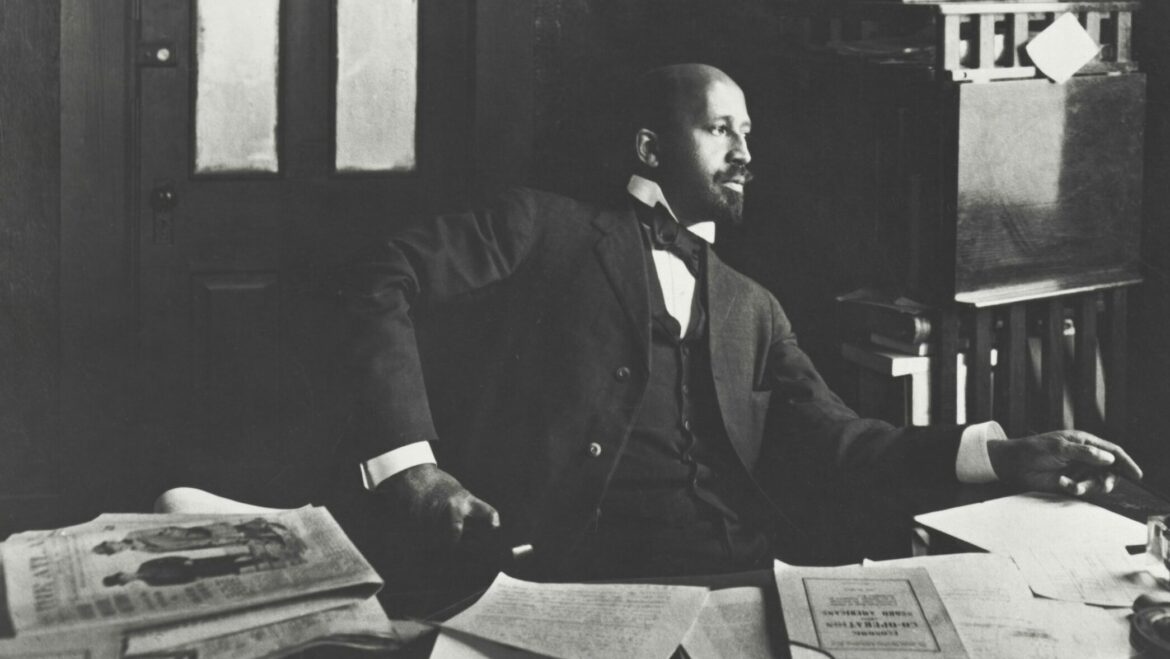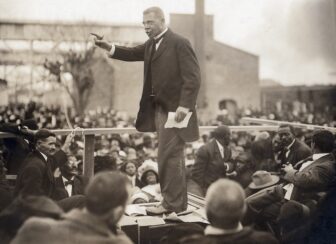Film recounts first movement to advocate for full civil rights for Black Americans

New York Public Library
W.E.B. Du Bois, a key organizer of the Niagara Movement, went on to co-found the National Association for the Advancement of Colored People.
A new documentary directed and produced by Lawrence Hott examines a significant yet largely overlooked turning point in the evolution of the American civil rights movement.
The Niagara Movement, to be distributed nationally by American Public Television in February, focuses on a group of prominent Black men who in the early 1900s pursued a new political strategy to bring an end to racial violence, discrimination and segregation of Black Americans.
Scholar and activist W.E.B Du Bois and newspaper publisher William Monroe Trotter convened the group’s first meeting in Fort Erie, Ontario — near Niagara Falls — in 1905. The 29 men who attended formed the Niagara Movement, declaring their intention to demand that Black people be treated equally under U.S. law.

The movement directly challenged Booker T. Washington, an educator and advisor to presidents who was the most powerful Black political leader in America at that time. Washington supported segregation and limited education of Black Americans. He used his influence to suppress, infiltrate and undermine the movement, which, by seeking full citizenship rights and equality for Blacks, pointedly split from his accommodationist approach.
The one-hour documentary provides historical context, connecting the founding of the Niagara Movement as a response to the racial terrorism of the Jim Crow era, including public lynchings and torture of Blacks and race riots instigated by white mobs. It also explores how the short-lived movement informed the strategies of the National Association for the Advancement of Colored People, which Du Bois went on to co-found in 1909.
Producing station WNED in Buffalo, N.Y., initiated the film under its former President Don Boswell, who retired in June 2021.
Tom Calderone, successor to Boswell as president of WNED licensee Buffalo Toronto Public Media, was determined to complete the production. The documentary was “Don’s true passion as he was leaving the organization and I wanted to make sure that not only did we do it, but we did it with care,” Calderone said.
The film, which is dedicated to Boswell, premiered locally Nov. 6 and is now available for streaming on YouTube, the PBS app and the film’s website. APT will be releasing the documentary for national TV broadcasts during Black History Month and beyond.
‘What are you going to show?’
With limited photo and film archives from this period of history, developing a creative visual treatment was especially challenging, Hott said. He drew from a mix of archival photographs, film footage and newspaper clippings. He also worked with animator Amit Sethi to develop animations and graphic designs that helped bring archival images to life.

“How do you tell a story that takes place more than 120 years ago?” Hott said. “There are some photographs, some archives, but how do you visualize the story?”
Hott, a documentary producer/director whose previous films for WNED include The Warrior Tradition and The War of 1812, has dealt with these challenges before. “One of the first things a filmmaker always thinks about is ‘What are you going to show?” he said. “The second thing is, “What is the … narrative?”
For that, he drew on the biographies of Du Bois, Trotter and Washington to explore how their early lives and education shaped their ideological beliefs — and how their mutual antagonism affected the movement. Du Bois and Trotter had their own disagreements, especially over Trotter’s conviction that Black women should be excluded from participating in the movement.
WNED produced a collection of educational resources from the film, including video clips, lesson plans and an interactive lesson, for the PBS LearningMedia site for educators.
“What we love about what we put on PBS LearningMedia … is the fact that we get a chance to share some of these lesson plans for teachers that want a deeper dive to some of these topics,” Calderone said. “The feedback has always been incredibly positive.”





